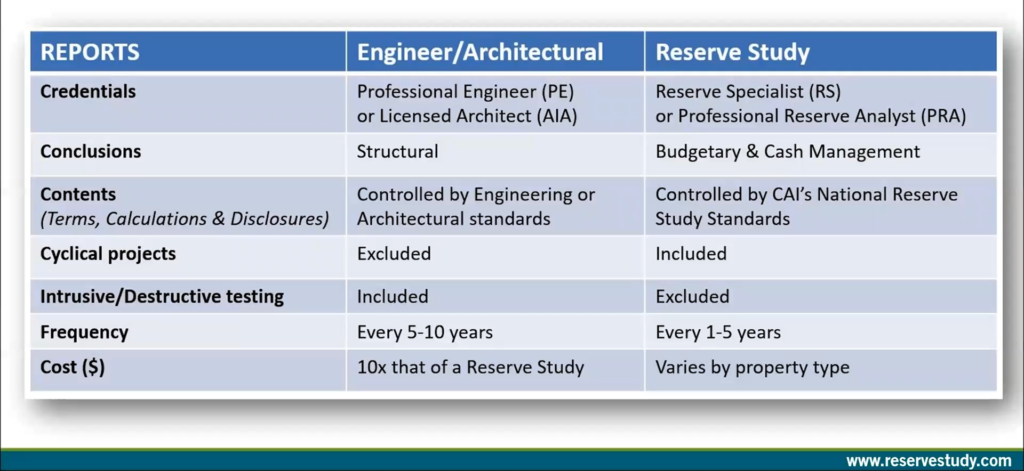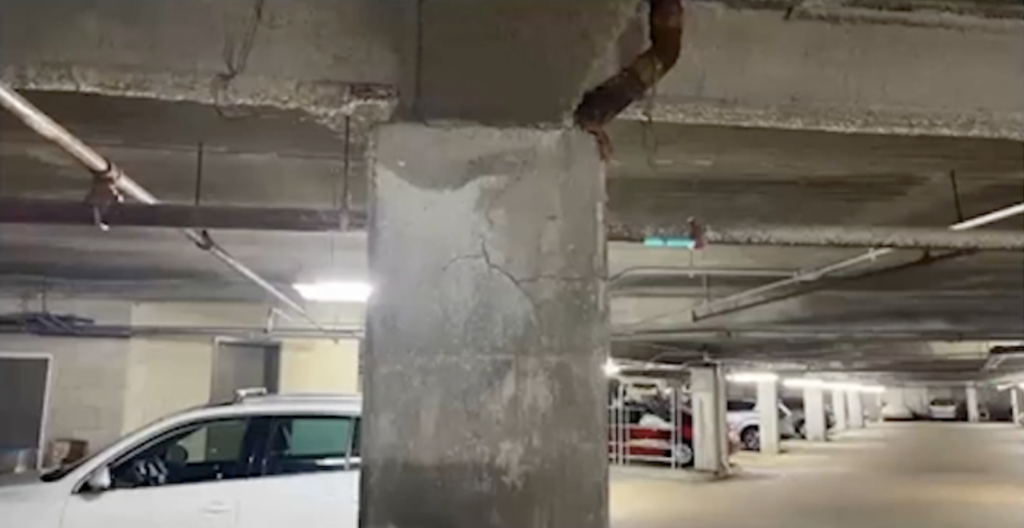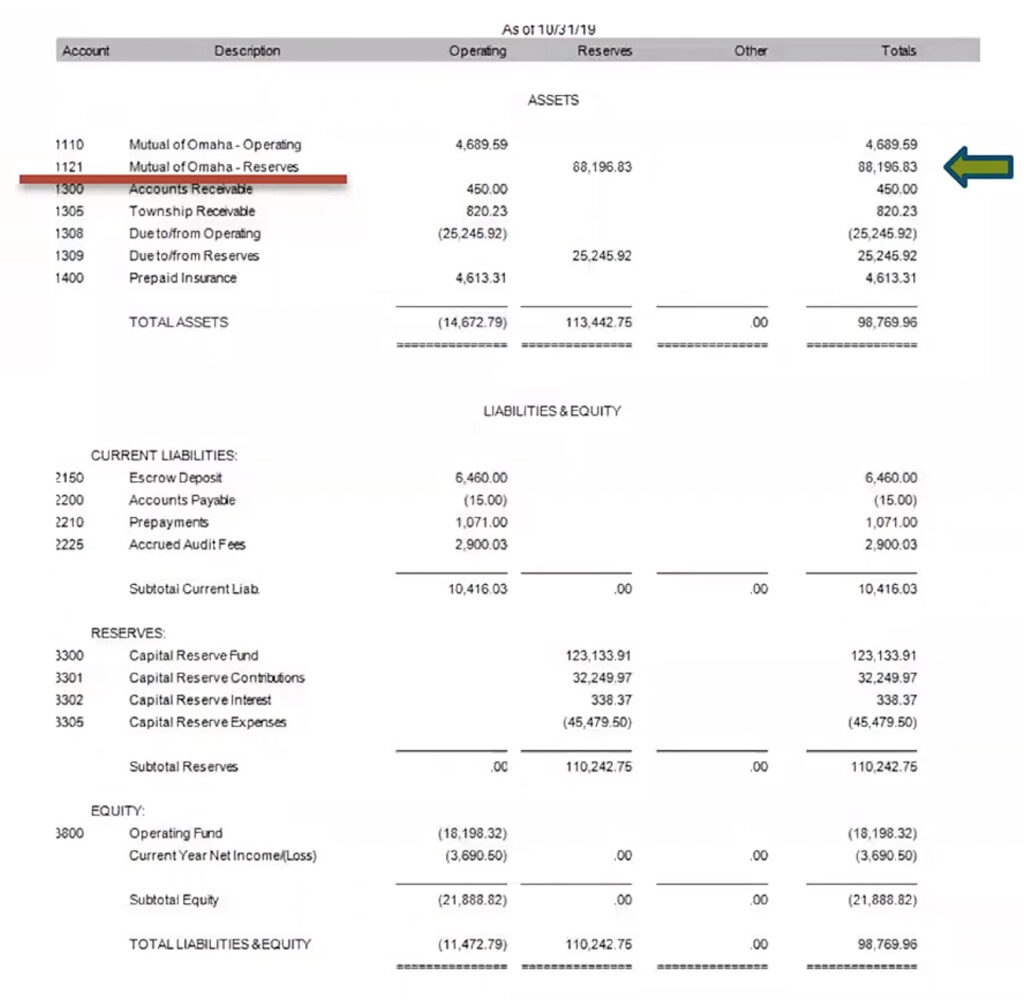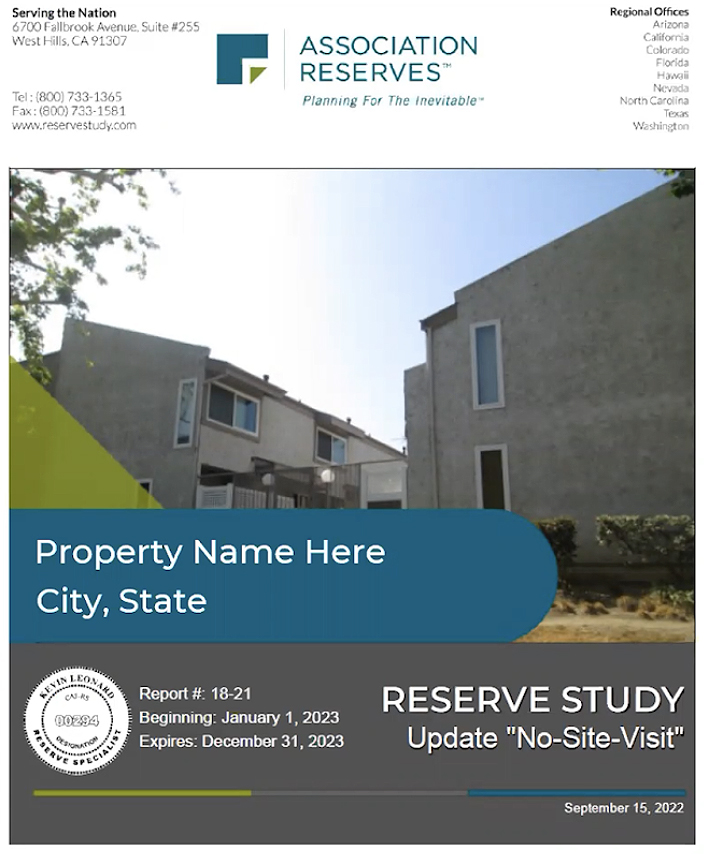So you’ve decided to get a reserve study. It would be good to learn the condition of your property so you find out how much you need to set aside to fund reserves. Now what happens?
Reserve studies prepare everyone in every state no matter the legislation. Every year, board members and associations ask the same question during budget season…
How much do we need to set aside? What do we need to do NOW for our property?
So let’s think about what you’re trying to accomplish protecting, preserving and enhancing the assets of the association. Remember, those assets are both physical assets and financial assets. The largest financial assets you have are typically your reserve funds. The key concept here is sustainability. What is it going to take to keep your association well-maintained, safe, and with maximized real estate values? For board members, you’re the only ones who can make the decisions to guide the association!
Who Should Prepare Your Reserve Study?
Some clients choose a DIY option, but it’s generally in your association’s best interest to hire an experienced, independent reserve study provider. After all, you’re not the reserve expert. Reserve funding decisions will either set your association up for success or cripple its future. So let’s walk through what to look out for when choosing the right reserve study provider!
Credibility matters.

What to Look for in a Reserve Study Provider
- Reserve Study Firm
Seek a reserve study company, or a department within a different type of company dedicated to preparing reserve studies. - Volume of Experience
Look for the ones preparing tens or hundreds per year. The minimum number of reserve studies to maintain a RS (Reserve Specialist) or PRA ({Professional Reserve Analyst) credential is 10 per year. We recommend looking for someone who’s doing much more than the minimum and is a regular producer of reserve studies. - Independence
Look for independence! Someone (or company) with no ownership interest and no ongoing business relationship (management, etc) with the association. You want someone who can “tell the truth clearly.” Not someone who is not reluctant to deliver bad news (as is often the case).
Consider Your Reserve Study Preferences
Cost
How much does a reserve study cost? Often, the cost and turnaround time of a reserve study correlate. Longer turnaround time may decrease the cost; or vice versa, higher cost for a rushed turnaround time. Many people fear that a reserve study is going to be too expensive. But remember that utilities are expensive, insurance is expensive, and good management is expensive. A quality Reserve Study, regularly updated, is just part of properly running an association. Besides, the cost of even a first time (“Full”) Reserve Study) is typically under 1% of the association’s annual budget. And Reserve Study updates are significantly less expensive.
Turnaround Time
Typically, the turnaround time for a reserve study is in a matter of weeks. Ask if they typically complete it in 4, 8, or 16 weeks, etc. Find out their norm and choose carefully. This way you get your results in time for an important deadline like a budget meeting.
Readability of Sample
Review their sample reserve study product and see if they are easy to understand. See if they fulfill what is necessary to create a successful funding plan.
References & Referrals
Consider their references or referrals! What do their other clients say? What does your manager have to say? Do they have someone they usually work with?
Customer Service
Once you’ve gathered options, contact them. Find out what their customer service is by emailing or calling them. It may not matter when you have days or weeks to get a proposal, but, it’s going to matter when you’re a day or two before a budget meeting and you need a timely answer (or revision).
Additional Features
Your reserve study service might include extra software, meeting attendance (online or “in real life”), a video explanation of results, etc. Find out what else you might get with your reserve study!
Is Association Reserves Right For You?
With over 36 years of experience in the industry, we can help your association reach the success you’re looking for! If you’d like to learn more about what our team can do for you, check out our reserve study services here and don’t hesitate to contact us for more information!
What is a Reserve Study for?
A reserve study is a budget and cash flow evaluation. Its purpose is to help you set your association up for long term success and sustainability. It ensures you have the funds to perform inevitable repairs and replacement projects in a timely manner.
Reserve Study vs Structural Evaluation

A reserve study is not a structural evaluation (which is necessary every 5 to 10 years). In the chart above, you’ll notice the differences between a reserve study and an architectural/structural evaluation, like the credentials and conclusions. We will talk about the lobby remodel, carpet replacement, signage replacement, and things that someone might call cosmetic. But a structure evaluates excludes these significant costs. Reserve studies evaluate the major projects that deteriorate on a cyclical basis (chiller, boiler, deck sealing, elevators, etc.), but not the structure elements themselves. Engineering or architectural standards control Infrastructure inspections, meanwhile National Reserve Study Standards control Reserve Studies.
The recommended frequency for a structural evaluation is every five or ten years. A reserve study updates every 1 to 5 years because it’s a budget tool with factors that are constantly changing (Reserve balance, physical conditions, and project costs). The current published Best Practice is to update your Reserve Study on the basis of a diligent visual inspection at least every third year. Due to additional hours involved with local destructive testing, an architectural report often costs ten times more than a reserve study.
PRO Tips
When you hire an independent, credentialed professional to prepare your Reserve Study, it is their professional “work product”. Review it for accuracy for all the right projects and dates/ages. But they are not waiting for you to “approve” it. They will send you a bill upon delivery.
A reserve study gets old because it prepares you only for your upcoming budget year! You’re going to need to update it regularly because the physical and financial information at your property is in a constant state of change. Also consider the economic environment that we live in – who knows how much current interest and inflation rates will change in the next year or two?
Lastly, learn the lingo! Check out this list of terms that are commonly used by HOA reserve study providers as you go through the entire process with us.
Read the Terms Carefully
In the engagement that you sign, look for:
- Turnaround Time
- Fees (Typically 50% down deposit and 50% upon completion)
- Number of Free Revisions
- Extra Offers (A live video explanation of results, meeting attendance, etc)
How Do You Prepare for a Reserve Study?
Now that you have your reserve study provider, how is a reserve study done and how do you get off to a good start? Here’s a sneak preview of what typically happens, what information exchanges, and what you can expect during the process:
The reserve study results are going to be the provider’s professional opinion.This is not a “the customer is always right” type of situation. Remember, we are giving advice and taking on liability to guide your association forward.
Expect accuracy. We look at the conditions we see and explain necessary actions. Disorganized and neglected associations may face some uncomfortable news about the true conditions of their property. The bottom line is that we’re going to call it as we see it.
You might not agree with your provider. Just because you like that front entry sign and that’s where it has always been for 15 years, if we truly see it otherwise, we’re going to be honest and say that entry sign has remaining useful life of zero. In our industry, we talk about the concept called familiarity blindness – when you see something so often, you no longer see it. It may not be what you want or agree with, but remember that this is a specialist’s recommendation for giving you wise counsel that you paid for.
What Questions Will Your Reserve Study Provider Ask You?
Early in the reserve study process, expect a call or email from your project manager! This is going to be the primary contact for the association dealing with the main contact for the reserve study company. Here you can set your preference if you’re a phone call or email type of person. We encourage email because it’s great to have everything documented for future reference. Afterwards, expect questions like these while they are getting a deeper understanding of your association:
What are you doing for ongoing preventive maintenance?
We want to know what you know about the property currently! We will see what we see, but how are YOU taking care of it right now?
Have you had a reserve study done before?
If a reserve study was done by someone else in the past, we’re going to ask for a copy of it. We want to see what they saw, what they found, and what they’ve measured.
What is your reserve project history?
Just like the prior reserve study, we want to get a glimpse of your association’s history and what has already been done. We might ask, “When was the roof last done? When was the building last painted?” etc.
Is anything needing unusually more frequent repairs than others?
You may be aware that the fence had been replaced three times in the last ten years, and that points to there being a problem somewhere. Maybe you’re always repairing the west side of the roofing on building one? Your building is unique. Tell us about how it’s behaving!
Access to restricted areas?
We will ask for accessibility to restricted areas. For example, an equipment room on the top of the building, or access to the pool equipment room where we can see the heater in the filter, or maybe even the clubhouse that you keep locked on a regular basis.
What were your infrastructure inspection report results?
The structural safety inspection report helps us understand if those cracks are just cosmetic cracks or significant cracks, because evaluating those types of issues are outside of our scope and beyond our area of expertise.
Scheduling a Site Inspection
If you need a site inspection, we’ll schedule your inspection. There are three “Levels of Service” in National Reserve Study Standards, two of them involving a site inspection. So if that’s what you’ve chosen, we’ll set the site inspection at a mutually convenient date and time. While we’re discussing schedule, that is a great time to share some insights about the history of Reserve projects done at your association.
PRO Tip
Many of our clients maintain a reserve project folder, either physical or digital, containing the details on all your reserve projects. It will tell us what you did and when. This way, you’re not scratching your head and trying to do a research project of your own when you’re starting the reserve study. It helps to have this information all together in one place! Maintain a reserve project folder with a summary of details.
One of the first major events in developing a reserve study is the site inspection. Your reserve study provider will show up and do all the heavy lifting, but it’s important to know how you can help prepare for and assist during the inspection to make it as effective as possible. Here we’ll give you a preview of the typical reserve study process helping you get familiar with what is ahead. Every year, associations of all types, sizes, and ages hire an experienced, independent professional to update their reserve study. So there’s no reason to be surprised!
What To Expect During Your Site Inspection
If you’ve hired someone to prepare a reserve study that involves a site inspection, that day it will start with a site inspection meeting. At that point in time, we will have probably been at the property for 15-30 minutes looking around and making sure the building is as we expect it from the information you’ve provided, prior Reserve Studies, and perhaps some satellite imagery.
Provide an Overview & Answer Questions
If we see things like the trees being overgrown, we’ll ask “Is that handled as a reserve project or is that part of ongoing landscape maintenance?” and other things you wouldn’t have thought to tell us in advance.
Give Access to Restricted Areas
You might hand over keys or tag along with us while opening restricted access areas like mechanical equipment, the clubhouse, rooftop access, etc.
From that point on, we’ll be on our own. I want to assure you that the site inspection is likely going to take hours, but your responsibility ends with the meeting and getting us into those restricted access areas. It’s not necessary to accompany the site inspector for the hours that they’re doing their job measuring, evaluating, documenting, and photographing.
PRO Tip
Reserve study site inspectors work more efficiently when they can completely focus on their work rather than guiding and teaching a client step-by-step. When we are on site, we strive to get things done within one day because conditions change and assets tend to move, and also as a courtesy to you so your schedule is not interrupted multiple times.
The larger site inspections in the reserve study industry are commonly done with teams. For example, someone is assigned to the outdoor assets (the parking lots, roadway, streetlights, entry signs, etc.) and another staff member is assigned to mechanical equipment, hallways, and clubhouse interior.
What We Will Find During the Inspection
Depending on your property, we’ll look at the perimeter fencing, measure the pool perimeter ironwork, look for ponding and repairs on the roof, and feel for soft spots.

This is a garage in an underground parking level of a client. You and I see the cracks in this picture that give us an uncomfortable feeling, but the people parking next to this structure might not even be aware of the cracks because they see them every day. This is what we mean by familiarity blindness. We may see rusted pipes and cracks in structural elements that start to make our project manager nervous. For structural damage like this, your project manager will recommend a structural evaluation (if one does not already exist). We are going to pick up details like noticing the rusty chain on your gate opener, giving us a telltale sign of how well you are or are not, maintaining your property.
Your Next Step
Expect some homework after the site inspection to fill in the project history story. We might ask why we saw certain issues on a building. From there we will collect more in-depth information on: what was done, why, where, how often, and when it was done, by whom, and how much it cost.
In the reserve study process after we’ve finished the site inspection and you’ve answered all our questions, many clients wonder what happens next and why is it taking so long. There is a lot going on behind the scenes!
Your project manager is busy interviewing association vendors or researching the latest pricing or material life expectancies, writing the report, and conducting the financial analysis. They’re working hard to make sure the reserve study clearly tells the story of the current physical and financial status of the association. They want to make sure what they’re recommending you accomplish is necessary for the sustainability of the building. The financial plan they craft will be something you can actually implement and “pitch” to the budget committee and owners.
Your Project Manager’s Role
Part of what your Project Manager is doing while working in the background is researching the useful life and cost factors for anything interesting they found on site. They will do their research phone calls with association vendors, the roofer, painter, elevator company, and service companies. As we collect information, we develop or update the component list and begin creating the body of your report.

Developing Your Funding Plan
The reserve study team will reach out to you generally at 3 times: in the beginning when we’re just doing the admin work and setting up the site inspection, during the onsite inspection, and finally when we’re calculating your reserve balance. We aim to get an accurate projection of the reserve balance at the end of your fiscal year, meaning the starting point for the Fiscal Year for which the Reserve Study preparing you for.

For example, if your reserve balance on October 31st is a little over $88,000, we’re going to ask: Do you expect to make your budgeted reserve transfers in November and December? Do you have any lingering reserve expenditures that are going to draw down your reserve balance?
How We Help You Achieve Reserve Success
With all that information together, we calculate your reserve fund strength. We develop a custom multi-year funding plan for your association that’s based on the components, expenses we see, and your reserve balance. If a critical project needs to be accomplished but you don’t have the cash, you might need a one time special assessment, or to spread it out over multiple years. That Funding Plan could involve a recommended increase to your Reserve funding that would require an increase in your overall monthly assessment structure. Sometimes we will have a strategy call with you to help figure out the most palatable (and effective!) path forward. The numbers tell us the projected expenses through the years, the strength of the reserve fund, and the smoothness of your cash flow plan. It’s our job to communicate that effectively to you so you can lead the association forward.
Now that your reserve study is done, we stand ready to answer all your questions as you absorb your reserve study results and shape your budget for the upcoming year. One of our most popular add-ons with our completed reserve studies is our online reserve calculator called uPlanIt. Right next to where you download your completed reserve study is access to uPlanIt – our online Reserve calculator that allows you to test adjustments to your reserve study, the components, starting balance interest, inflation, or the funding. It helps you avoid any unwanted surprises that might pop up if you choose to do something different than we recommend. We call it our reserve study sandbox, where you can safely play with your reserve study results with no fear of causing a catastrophe. The completed reserve study report document and uPlanIt are how we guide your association to a safe and improved future.
How Do You Get Your Reserve Study Results?
The reserve study provider is going to complete or publish the report for the client and deliver the results via paper, email, or an online portal. Association Reserves clients go to our website (www.ReserveStudy.com), and log in to their account in our Client Center (just like you’d log into your bank to look at your balance or print monthly statements). When you log in, your Dashboard shows – where a portfolio manager would see multiple properties listed, or an onsite manager who would only see their property. By selecting your association, you can download the Reserve Study, Executive Summary, any related reports or videos, and access uPlanIt.
What Your Reserve Study Report Tells You
The Executive Summary
The Executive Summary is a simple document summarizing your Reserve Study situation – what was done, your starting point, components, and our recommendation. Here you can get a simple overview of what’s going on with your association on a physical and financial basis. This summary is often what we recommend be provided to homeowners. Many of our clients post this section on their website for their owners. It’s typically a couple of pages containing the summary of findings and recommendations.
The Reserve Study
A Reserve Study itself contains the Executive Summary, graphs and tables, methodology description, and component details.
The Reserve Study Report Communicates:
- Site Inspection Results (the physical condition of your assets)
- Reserve Fund Strength
- Funding Plan (where you need to go from here)
What Does an HOA Reserve Study Look Like?

Check out what your reserve study might look like from cover to cover here! Depending on the size, complexity of your property, and your Reserve Study “Level of Service”, your Reserve Study might be 20 to 100 pages (or more!). Now you might ask, “What does this really tell me? What’s the meaning? What are our alternatives?” These are all good, common questions to ask.
PRO Tip: Questions & Reserve Study Revisions
We welcome all questions! Especially in the first 60 days. Most firms offer one revision completely free. Please remember that these results are time-dependent. A Reserve Study is a perishable commodity. The longer you wait, the more things change and become outdated. If your next budget year has already started, then it’s late to set the budget for that year.
In a timely way, we aim to support you with the questions that you have and get you ready to set your next year’s budget. If you forgot to tell us about another CD that adds another $50,000 to your reserve balance, that’s fantastic. In the first 60 days, we’ll revise your Reserve Study for free. A different starting balance is the number one reason clients ask us to revise a report.

What is uPlanIt?
How about a test drive for your reserve fund? You can do that! uPlanIt is one of the free products that we offer for our Full, Update With-Site-Visit, and Update No-Site-Visit clients. It makes your reserve study come to life, without making real changes to your actual/published reserve study. Think of it like your “sandbox”, where you can test changes and see what happens.
For example, if you recently learned that the asphalt provider is going to do a project for $6,000 instead of $8,000, or think that the metal railing is going to last 15 years instead of just 10 years due to your exceptional preventative maintenance, or your interest rate has increased – you can make all these tweaks in uPlanIt and see the difference it makes in your Funding requirements. uPlanIt allows you to take ownership of your Reserve plan. With uPlanIt, you get control over your numbers. No more wondering about what happens if any number of changes arise or apply, you can just see for yourself. Best of all, calculations are in compliance with National Reserve Study Standards. Get a tour of uPlanIt here!
What’s Next?
Look around when you’re shopping around for a reserve study provider. Find out what they offer with their services. The work of being a board member is hard enough, so check out what services they offer in addition to the Reserve Study and evaluate their Customer Service. At Association Reserves we offer a deep library of resources to prepare your association safely into the future, preventing surprises at any stage in the entire reserve study process. For more resources, check out the rest of our articles here, or subscribe to our YouTube channel to follow along on future tips like this every week!